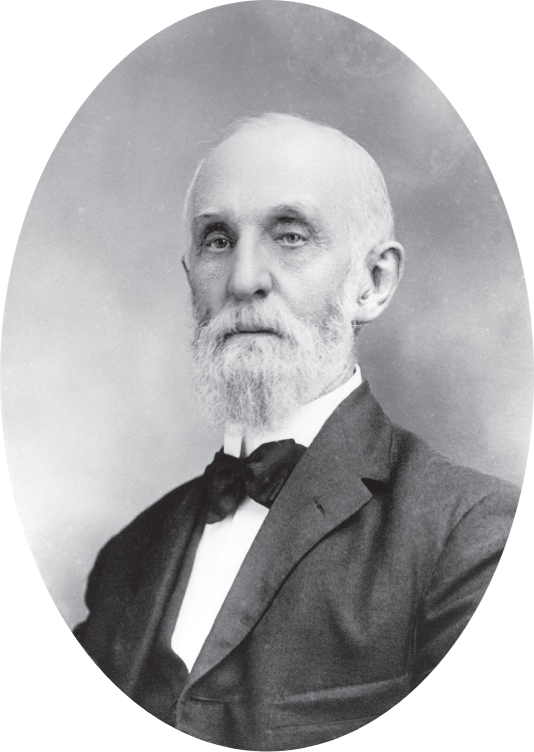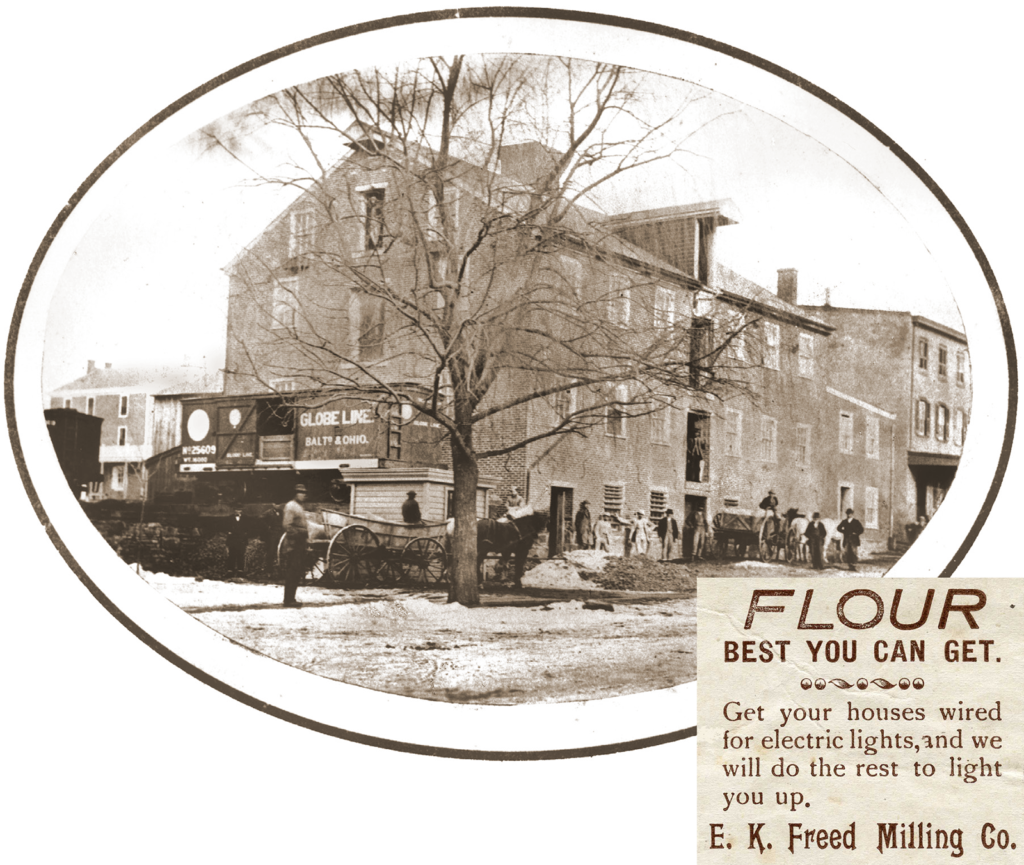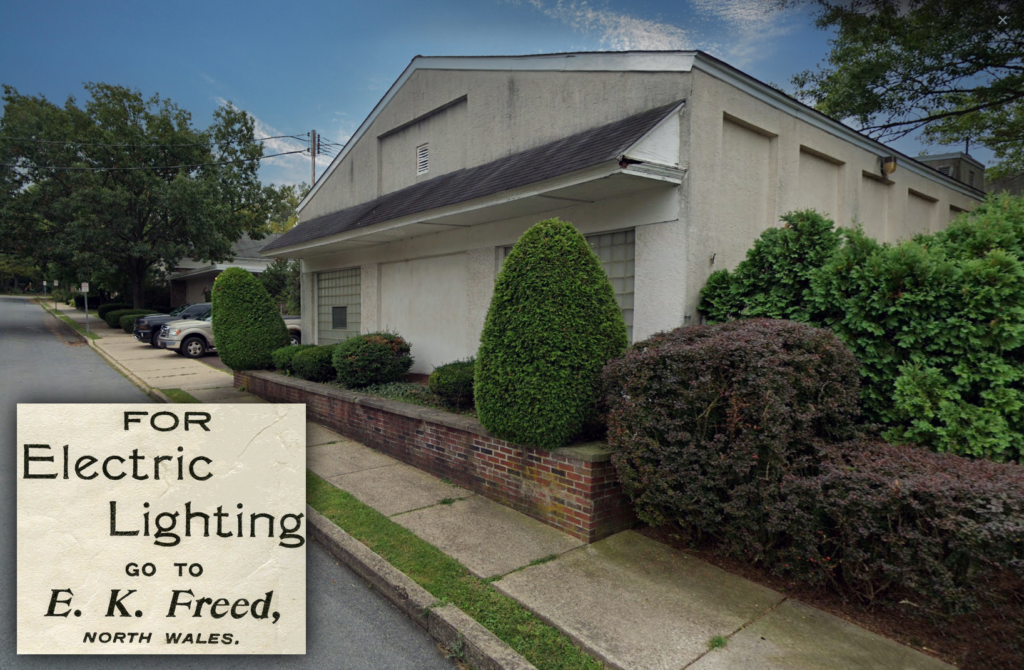This week we will discuss another of our early citizens, Elias K. Freed.
Elias K. Freed was born in Harleysville, July 1, 1830. He was educated in the township schools and after leaving school he learned the shoemaker trade. The work was not to his liking, however, and he engaged in the lumber business at Harleysville with an uncle.

In 1855 the North Penn Railroad was completed from Philadelphia only as far as Gwynedd station. All freight, including lumber, had to be hauled from there. Passing through what was later the borough of North Wales on his way to the railroad, Mr. Freed foresaw advantages that would follow the completion of the railroad through the Gwynedd Tunnel. That year Mr. Freed opened a lumber yard at the junction of Main Street and the railroad. At that time a hotel and blacksmith shop, with a few scattered farmhouses, were the only buildings.
Mr. Freed soon built up an extensive business and his trade grew rapidly after the tunnel was completed and the railroad opened. In 1858 he opened a grist mill and for over fifty years operated a mill where the present planing mill property stands [139 S. Main Street]. We have discussed this mill in our previous articles.

At various times Mr. Freed was interested in other businesses here and he was one of the organizers of the First National Bank of Lansdale in 1864. He was soon after selected president, which position he held for forty-five years, retiring in January 1912 on account of failing health, when he was elected vice president. He always took an active part in the affairs of the bank as well as every other concern with which he was connected. He was one of the organizers of the North Wales Building and Loan Association and for many years served on the finance committee. He was a director of the Pennsylvania Millers Insurance Company and one time served as treasurer of that company.

Mr. Freed helped to organize the North Wales Water Company and the Green Lawn Cemetery Company, being a director in both. For nearly a half century he was a member of the Commercial Exchange. When the necessity of better lights for the borough was apparent, Mr. Freed installed an electric plant at his mill. He later constructed an electric power plant on the site later occupied by Stainless. Inc., on Third Street, south of Montgomery Avenue. His plant supplied the borough with lights. [As of 2022 Mr. Freed’s power plant building still stands.]
Although never taking on active part in politics, Mr. Freed several times was elected to borough council. For over a half century Mr. Freed had been a banker, counselor and friend for hundreds of people in the community. His judgment was sought by men in all walks of life and his advice was always given generously. His acquaintance throughout the county was large.

In April of 1908 he ceased operating the flour and feed mill and moved his office to the little building on Second street in the rear of Wheelers Drug Store [107 S. Main Street]. There the business of the mill, which had been in continuous operation for a half century, ceased.
Mr. Freed died at his home on Main Street [107 S. Main] on May 27, 1912, at the age of eighty-one years ten months and twenty-eight days.
The funeral was held on May 30, from the house. Interment was made at the Lower Salford Mennonite Burying Grounds, where the wife and parents of the deceased are buried.
[In 1959] Mr. Freed has one living descendant in North Wales, a granddaughter: Mrs. Corrine Freed Lewis, wife of the writer of these articles [Leon T. Lewis].
This post is sourced from a column entitled Early North Wales: Its History and Its People penned by long-time North Wales resident historian Leon T. Lewis. The article appeared in its original form in the June 30, 1959 issue of the North Penn Reporter.
